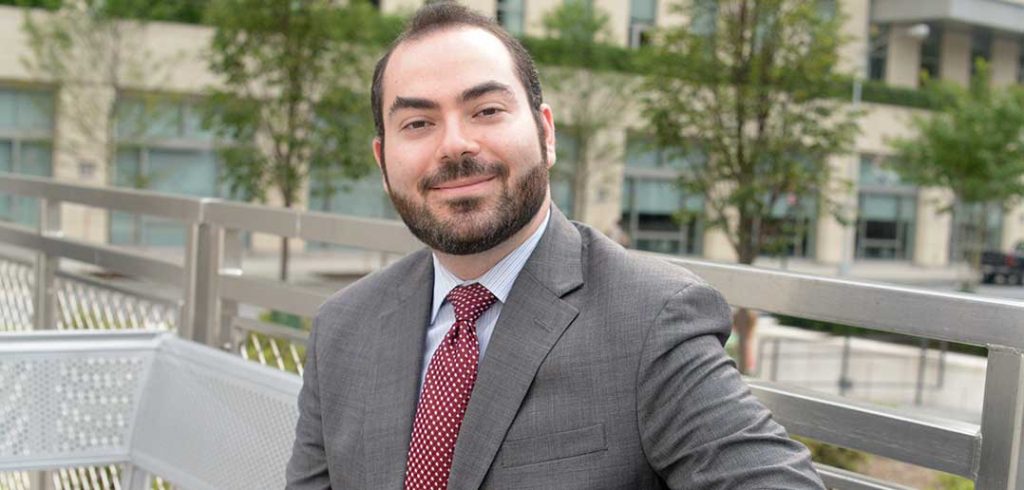Lazebnik was studying electrical engineering in the early 2000s and found himself sucked into arguments about the propriety of Napster and Kazaa, both wildly popular and legally dubious online file sharing services.
“I enjoyed the debate about whether this was morally right. Not necessarily whether it was legally right, because what did I know about the law? I could have probably guessed where the law would say things should end up though,” he said.
When he entered law school, Lazebnik focused on intellectual property law, and in 2008, he joined Fordham Law School as a clinical professor and the head of the newly created Samuelson-Glushko Intellectual Property and Information Law clinic.
Today he supervises a dozen students a semester who work on about 36 cases (or “matters,” as he prefers to call them) brought by artists, authors, entrepreneurs, inventors, and nonprofit groups that need help in resolving issues related to copyrights, trademarks, patents, or privacy issues. This can encompass drafting agreements, appearing in court or simply counseling a client on what the law says they can do.
“Sometimes we have people who have a great idea that involves other people’s works, and the students help the clients figure out what the copyright law allows them to do without getting permission, and what’s considered fair use. Sometimes the students have to explain to the client that what he’s trying to do really does require a license, or he’s probably going to be sued,” he said.
The “fair use” concept can be tricky, as many people believe that if they’re using a video in a classroom, the law will protect them from a copyright holder’s lawsuit. Not so, says, Lazebnik, who brought up a contemporary example to illustrate the issue’s complexity.
“Let’s say that today, somebody captures on their smart phone a video of an incident between the police and a person, and the news gets a copy of that video and plays it. In that instance, it’s immediate and newsworthy, and is a fair use,” he said.
“But if the reporters want to go back two weeks from now and report on it again, and want to use that same clip, in that moment it may not actually be a fair use anymore. You have to get permission from the person who owns the video because the immediate nature of the news reporting is gone.”
The challenge for students is learning these kinds of nuances and explaining them in simple terms to their clients. Laws that address whether, say, Robin Thicke stole from Marvin Gaye to create the song Blurred Lines are based more on guiding principles and less on clearly drawn positions. If there seem to be a lot of grey areas, Lazebnik noted that he commonly says to students and young attorneys that “if laws were black and white, there’d be no need for lawyers.”
Although the internet has made it easier than ever to copy others’ works, Lazebnik said United States law, which was updated in 1998 with the Digital Millennium Copyright Act, also allows for the easy distribution of expression for many unknown artists by providing a framework for internet service providers to follow in dealing with content.
“Before, we only had a few places that controlled what kind of media got to the public. Now, any creative person with a camera can record themselves and upload it and share it, and if enough people like it, they become well known for it—and might even start a career with it without having to go through what artists 20 years ago had to go through,” he said.
Lazebnik said it’s challenging to have to hit the “reset” button with a new cohort of students every semester, but the tangible benefits to society make it worth it. One of his favorite former clients was a nonprofit that educates k-12 students about how ads play to stereotypes, body issues, and racial issues, and how to critique those ads in a manner consistent with fair use.
“There’s a real benefit to just sitting down with an individual who can’t afford to speak to anybody else and solving a problem that’s affecting their life,” he said. “The students gain a lot from that, because those relationships crystallize what it means to be a lawyer.”


